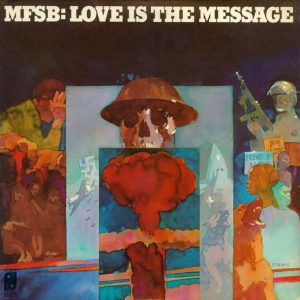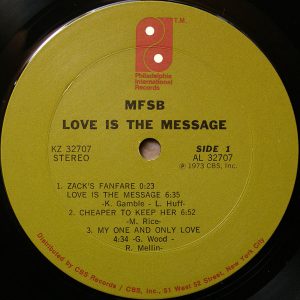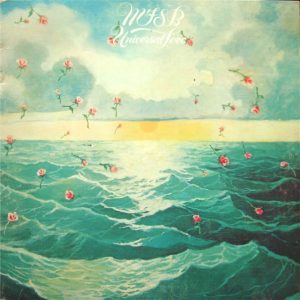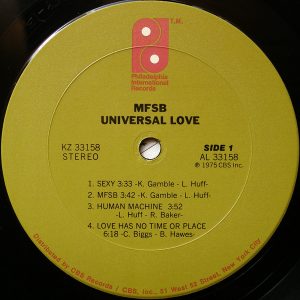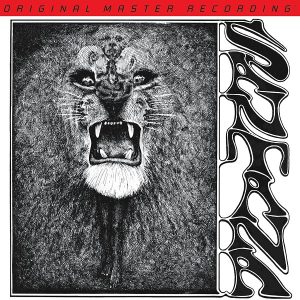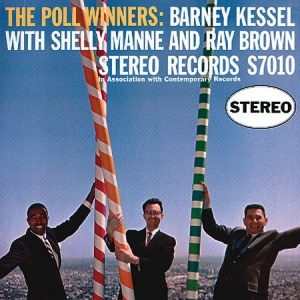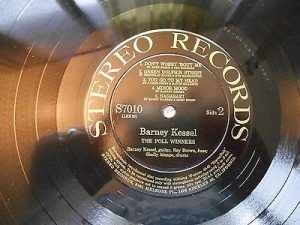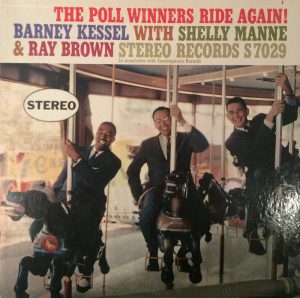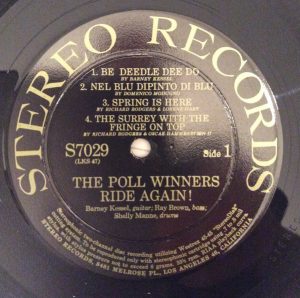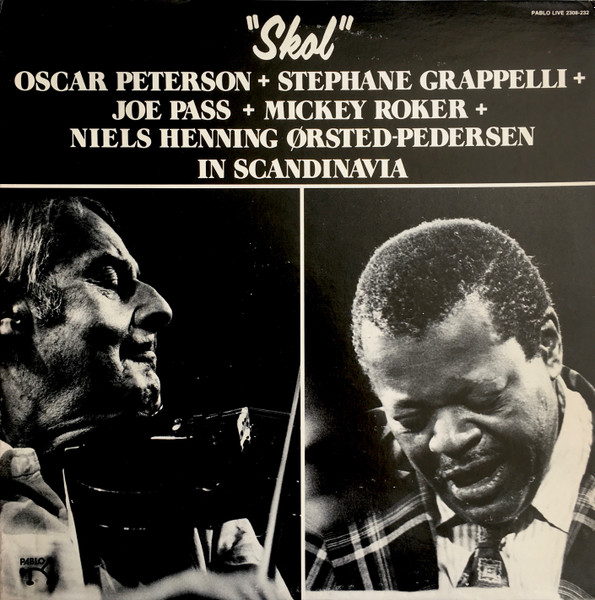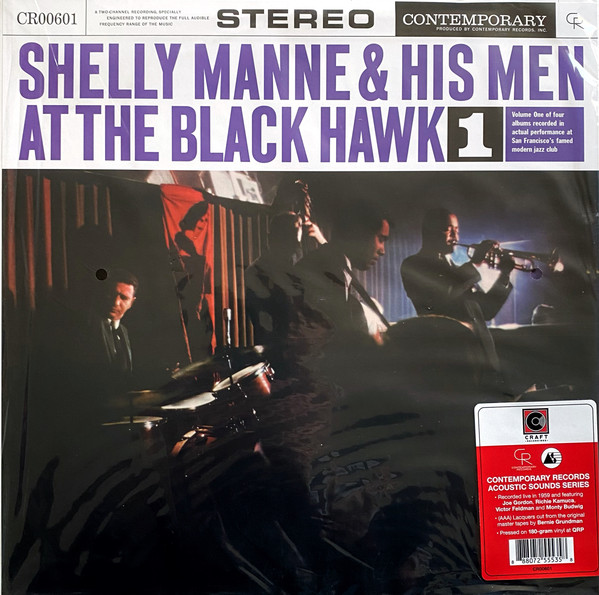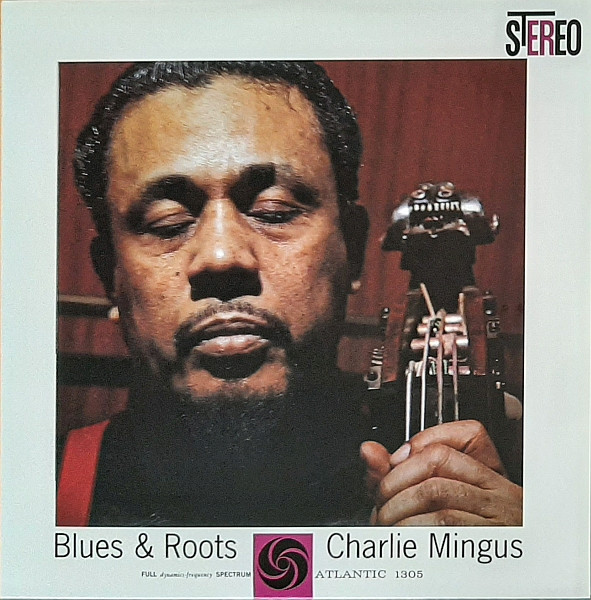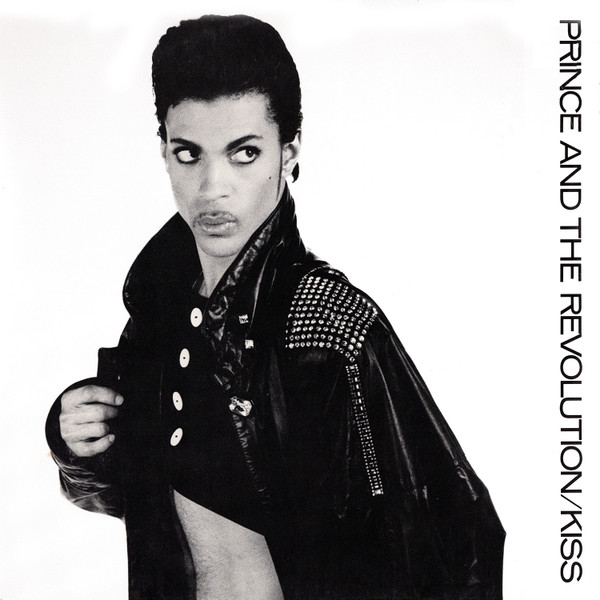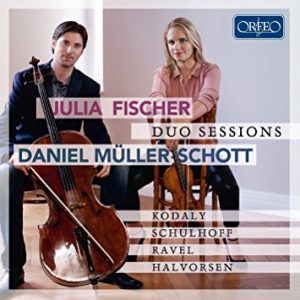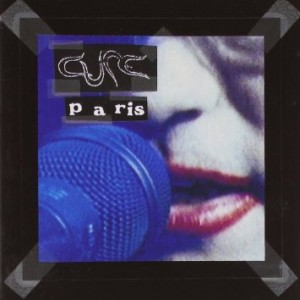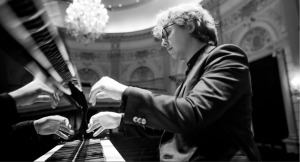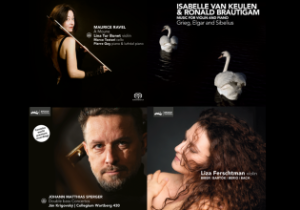This is an ongoing project by Claude Lemaire of Soundevaluations.
51. MFSB, Love Is the Message. Philadelphia International Records – KZ 32707 (1973), 33 1/3 rpm. Genre: Philly soul, disco, smooth jazz
After nearly 45 years—wherein the world holds its breath under the genuine threat of eroding freedoms, and escalating nuclear war—MFSB's message still rings true and maybe more than ever, resonates all over the globe. Bart Forbes' cover illustration under the art direction of Ed Lee perfectly paints the somber scenery of the cold war colliding with the 1960s civil rights movements, with KKK hoods, and Nazi propaganda intertwined; strangely a scenario not unlike more recent, and present times. With the Paris Peace Accords of 1973 announcing the return of US troops from Vietnam, it seems at first glance somewhat odd that producers Kenny Gamble and Leon Huff should stick with such a dire LP cover—exposing the worst of the past instead of promoting a more positive portrait of the burgeoning (me)decade—perhaps reminding us that the mistakes of the past may resurface at any giving time. After a so-so self-titled debut earlier that same year, comprising mostly instrumental covers, this was MFSB's–Mother Father Sister Brother–second, and best album, both musically and sonically, with Universal Love [Philadelphia International KZ 33158], their third LP from 1975, coming in a close second. Although the Gamble-Huff duo had previously scored soulful success with such songs as "Expressway to Your Heart", "Only the Strong Survive", "Love Train"; "I'll Always Love My Mama", and "The Love I Lost"; it took MFSB's Love Is the Message to solidify "The Sound of Philadelphia' through its title track and especially its show-stopper hit "T.S.O.P.", serving weekly as Don Cornelius' Soul Train theme. With Earl Young's pioneering hi-hat shuffling, accompanied by Ron Baker on bass, Norman Harris and Bobby Eli on guitar, Don Renaldo and his Strings and Horns, and Bobby Martin's magnificent arrangements–just to name a few of the key players—this latter track really epitomized the confluence of Philly soul with the emerging disco beat, while the title track became a 'classic anthem' for the gay community, and one of the most defining tracks spinning at David Mancuso's legendary 'Loft' in NYC—the original architect of "Love Saves the Day" and precursor to the 'love message' Philly philosophy. Superbly recorded and mixed by Sigma Sound Studios' owner Joe Tarsia, and mastered and cut at Frankford/Wayne Recording Labs—both anchored in Philadelphia, PA—it is one of the most balanced and well executed of the Philly releases. The 23 second intro "Zack's Fanfare", serves as a short show demo-worthy instrumental track with crisp and punchy big band sound—a perfect tune to get ones attention.
52. MFSB, Universal Love. Philadelphia International Records – KZ 33158 promo copy (1975), 33 1/3 rpm. Genre: Philly soul, disco, smooth jazz
As mentioned above, this is the group's third and last LP worth owning, their subsequent albums not living up to the standards of this List nor to their best efforts. Contrary to the previous release that comprised two superb tracks plus a short interesting intro, Universal Love counts five great tracks—including the album opener "Sexy", a fine cover of The Nite Liters' 1971 hit "K-Jee" which grew in popularity two years later when included in the Saturday Night Fever movie soundtrack; and my favorite of the LP: "T.L.C (Tender Lovin' Care)" with its big band stylistic influences, and stunning sax solo intro by Zach Zachary and Tony Williams; "Love Has No Time or Place" though not a hit, is also one of the interesting pieces. Predominantly instrumental like the preceding one, it veers slightly more towards the disco vibe as compared to Love Is the Message, yet still retains the famous Philly soul 'house band' sound. The personnel and production team, pretty much remains unchanged. Once again, engineers Joe Tarsia recorded the sessions at Sigma Sound Studios, and Nimitr Sarikananda at Frankford/Wayne Recording Labs mastered and cut the lacquers in Philadelphia, PA. The sound quality does not quite reach the high level of the previous release: with a bit of compression creeping in, a touch less crispness in the brass, a slight lack of weight in the bottom end, and less upfront or defined in the overall drumset—thus placing this MFSB LP second in sonics. I compared my normal US original pressing—also cut by NS—to my white-label promo, preferring the latter by a small degree, especially in the upper bass 'punch' region. As for Ed Lee's gatefold cover design, and photography; it is the exact opposite of the previous illustration, resembling more a pastel painting printed on a soothing 'get well card'—a sign of the times that people were past dwelling on the problems of the world, hungry for happier times.
53. Santana, Santana. Columbia – CS 9781 (1969), MoFi – MFSL 2-45012 (2015), (2x45 rpm). Genre: Afro-Cuban, latin rock, latin jazz, psychedelic, heavy blues rock, latin soul
Discovered at Woodstock, stealing Saturday's spotlight show with their stunning "Soul Sacrifice" spectacle, the San Francisco's sextet conquered the stage 'with a little help' from LSD's 'mind-expanding' friends, consequently catapulting them to fame, just a few days prior to the release of their first LP. Santana's self-titled debut is a magnificent melting pot of musical styles, second only in sonics to their 1970 follow up Abraxas. Song compositions as well as arrangements, and performances are up there with the best, easily competing with the aforementioned album. Produced by Brent Dangerfield, and the band, there are no dull moments along the journey, with one track reprising, while actually improving upon, Willie Bobo's boogaloo jazz hit "Evil Ways"—a precursor to early discothèque's Latin soul-funk-flavored favorites such as War's "Spill the Wine", hitting the charts the following year. Their 'heavier' version of Babatunde Olatunji's "Jingo" would soon leave its mark on Titanic's 1970 single "Sultana" as well as Cerrone's first French group Kongas from the early-1970s, and Black Soul's mid-1970s afrobeat-disco musical hybrid. Also noteworthy is the delicate piano playing found in the intro, and finale of "Treat" that seems to have inspired Pink Floyd's "The Great Gig in the Sky" from DSOTM. Likewise it is obvious how "Soul Sacrifice" had a profound influence on The Disco Sound of André Gagnon's first single "Wow", six years later. Recorded and mixed at Pacific Recording Studios in San Mateo, CA, by engineers Bob "Deputy Dog" Breault, and Eric "Gentle Ben" Prestidge; according to the credits, it was originally mastered and I guess cut at Customatrix—a division of Columbia in charge of the metal parts right up to the stampers. I did not have an original 1969 US pressing to compare with but do own a Canadian '360 Sound' first press that always sounded poor, with no bass, nor highs, but mostly mids—and quite inferior to my old Canadian '360 Sound' Abraxas pressing—that I would rate no more than a 5. Mofi came out with a first half-speed remastering in 2007 that I found disappointingly soft and veiled in the treble, leading to a lack of articulation, and definition, but nevertheless was a bit better than my Can. copy, leading me to give it around a 6.5. By contrast this 2015 double 45 version mastered by Krieg Wunderlich and assisted by Shawn R. Britton is way ahead of any pressing I have heard in sound quality, and I'd rate it a strong 9.5. Although there is still some slight dryness and lack of extension in the very top octave, apparent mostly as 'sandy' cymbal textures, the rest of the spectrum is spectacularly good, with solid powerful lows and mids, providing forceful driving drumstrokes akin to real live music. The organ feels organically raw, rich, and colorfully 'crunchy'. Percussive instruments such as timbales and congas conquer the deep, and wide panoramic stage. Palpable, and timbrally realistic for sure, they do not attain the top transparency detail found on Abraxas [MoFi UD1S 2-001], though the latter's 'one-step' procedure provides it with a small unfair advantage over this conventional 'three-step' double 45 MoFi edition. Overall, the sound is big and thick but less airy and 'hyper-detailed' than their one-step release—which is to be expected given the difference in price, and procedure, yet still remains tonally right on my system.
54. The Poll Winners , The Poll Winners. Contemporary – C 3535 (mono) (1957) – Stereo Records S7010 (1958), Analogue Productions – AJAZ 7535 (2011) (2x45 rpm). Genre: West Coast jazz
If ever there was such a thing as a symbiotic cool jazz trio up for election, The Poll Winners would win my vote hands down. Composed of Barney Kessel on guitar, Ray Brown on bass, and Shelly Manne on drums, these West Coast Contemporary 'cats' sound as if they had been playing together for decades on end, when in reality Kessel had sidelined with Manne on a few previous albums, and once shared the stage at Carnegie Hall with Brown—at one of Norman Granz' Jazz at the Philharmonic concerts—but this LP represents their first recording gig as a trio. As a unit they are tightly locked together, yet remain relaxed, supple and sweet. Consisting mainly of traditional jazz, and popular standards, both sides can work wonders spinning as background music, but the agile performances between players commands complete attention from us for true serious music appreciation. Contrary to today's misguided desire to dominate the other by sheer loudness level, these musicians mastered the art of listening among themselves, at times showing great restraint, along with subtlety, speed, and delicate dexterity on demand. Needless to say, when combined with Contemporary's 'genious-in-residence' Roy DuNann manning the mics, and minimal controls in Los Angeles back in March 1957, how could it not turn out 'deliciously' great. Mainly dry sounding, and intimate, all three instruments–guitar in one channel with the two others sharing the opposite—are so easy to follow, with timbrally realistic portrayals: Brown's bass has the perfect equilibrium of pitch articulation, and resonant roundness, spectrally complementing Manne's trebly rhytmic brushstrokes circling the snare skin, while Kessel's Gibson guitar sweetly shines with just the right mixture of warm tone with subtle sustain. Unfortunately, I do not have an original 1958 Stereo Records in my collection but based on my 1984 OJC copy–which are typically fine sounding (thin) pressings but not the equal of more expensive remasterings—I can absolutely attest to the incredible session sound that DuNann captures on tape, and can confidently guesstimate—based on past close comparisons–the uptick one would get with a NM original or perhaps greater still with Analogue Productions' double-45 rpm, remastered, and cut by Hoffman and Gray at AcousTech Mastering—which I will report on in the near future when it arrives.
55. The Poll Winners, Ride Again!. Stereo Records S7020 (1958), 33 1/3 rpm. Genre: West Coast jazz
Recorded 17 months later by Roy DuNann, and produced by Lester Koenig in August 1958, this is the trio's follow up to their debut. Again, mostly filled with traditional standards, there are a few more originals by Kessel, and Brown on this one. It would be pointless to waste time, and space repeating the exact same comments as described above, for it is on par in music, and sound quality, making it interchangeable on all aspects. So if you love one, you'll no doubt love the other equally. In this case, I was lucky enough to find a NM original Stereo Records, and can confirm that it is of true reference caliber, almost to the point of wondering if a double—45 rpm remastering could really surpass it.
To be continued...
For more from Claude Lemaire go to his blog...
http://soundevaluations.blogspot.ca/




